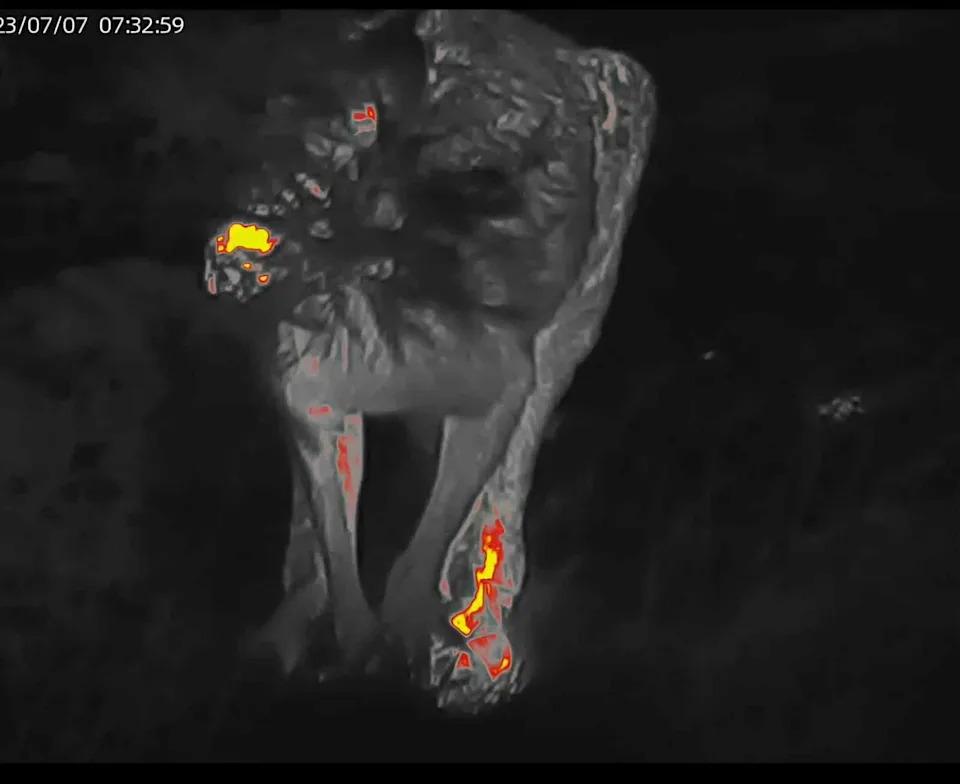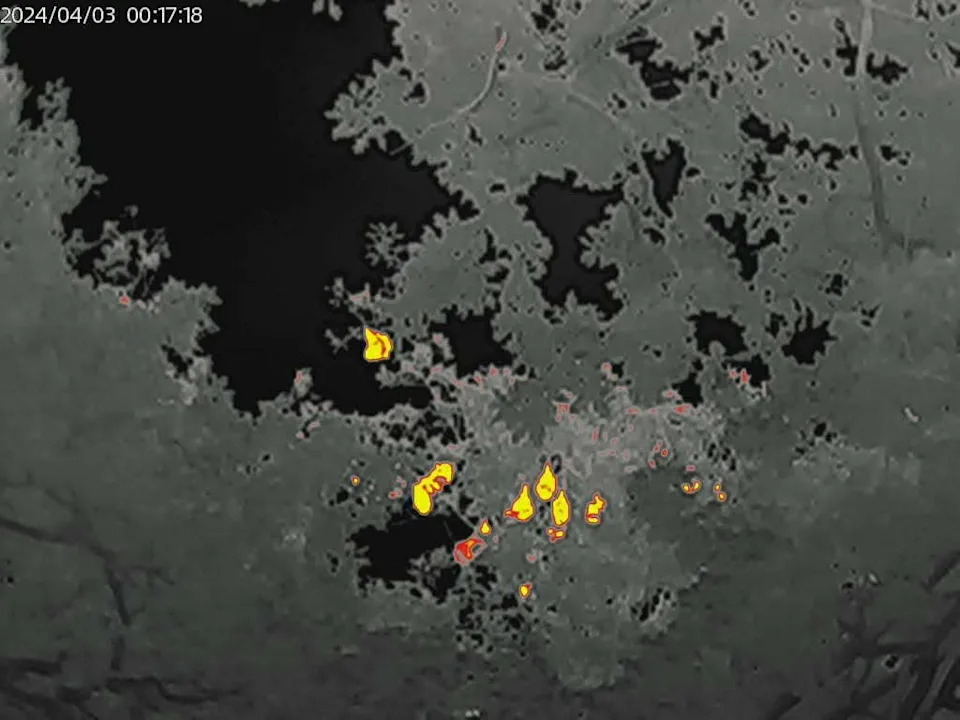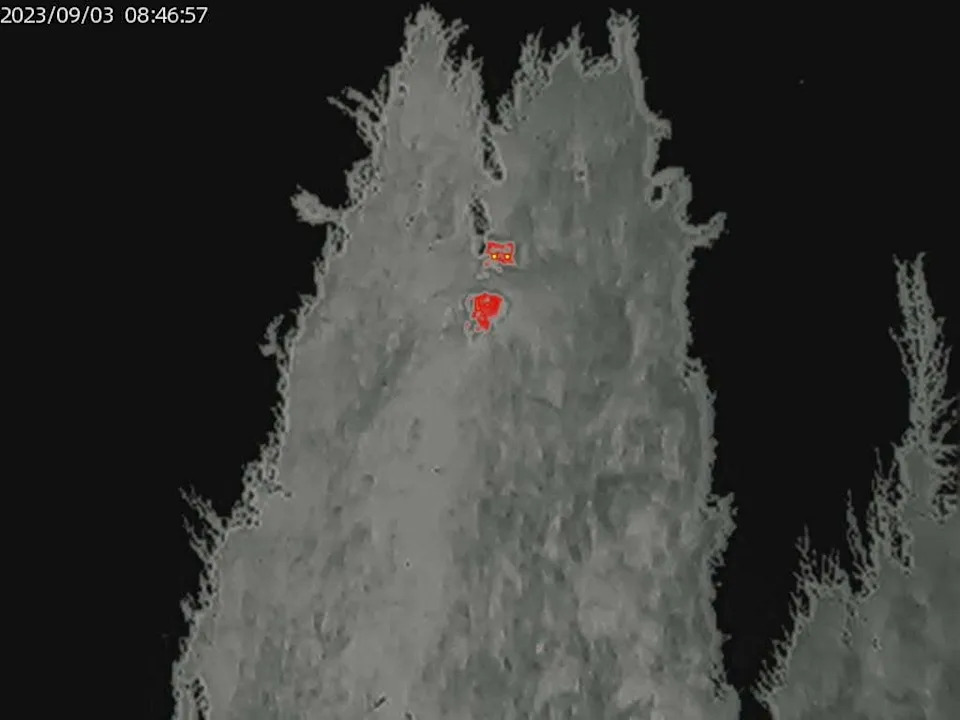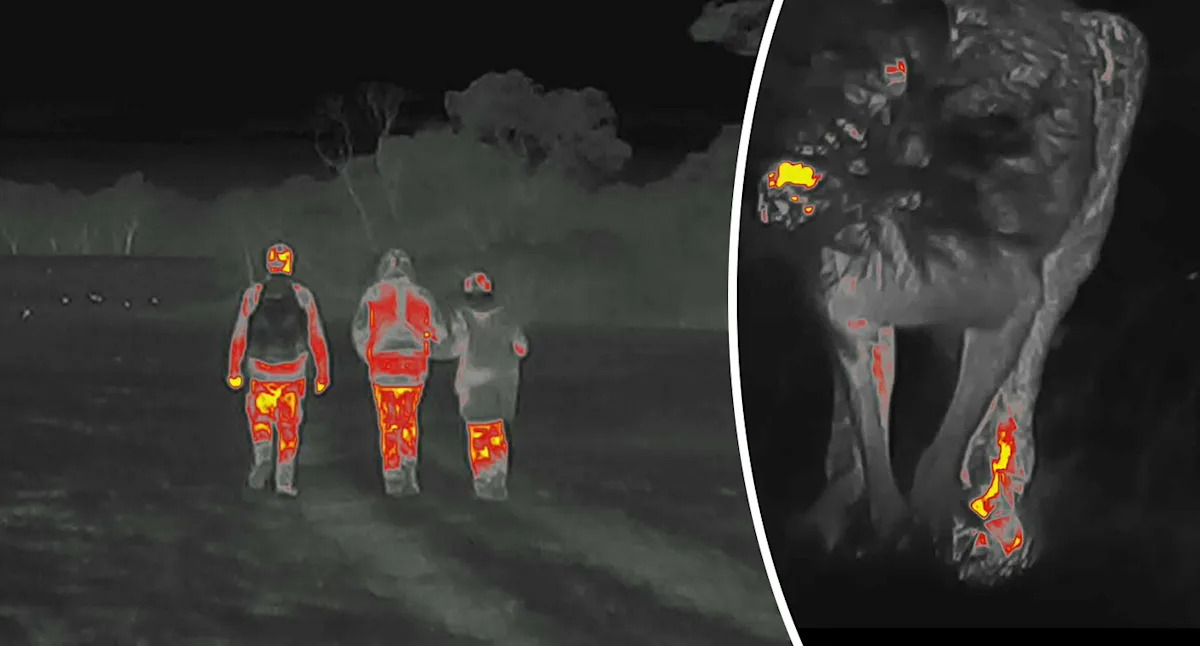Stumbling through the bush in the middle of the night with nothing but a torch is the dangerous reality many rescuers endure as they search for injured or orphaned wild animals. Over 80 per cent of these volunteers are women, and they’re often venturing into unknown territory.
But simple $1,800 thermal imaging devices are now helping hasten searches for kangaroos, wallabies, possums and eagles.
Aussie mum Shelly Burrowes juggles looking after her two kids and helping animals in southwest Victoria. She first purchased a thermal imaging monocular three years ago, and it’s proved so useful she doesn’t leave home without it.

The infection in this kangaroo’s leg glows red in Shelley Burrowes’ thermal imaging device. Source: Hamilton Wildlife Shelter
Not only does it help her locate animals, but it can also precisely locate wounds that need treatment before an animal is captured. A picture she shared with Yahoo News shows an infection in a kangaroo’s leg glowing red at night.
“I’d gone out to this adult male kangaroo, and he was standing very still under a bush. I needed to be able to decide whether to capture or euthanise him,” she said.
“With a torch, I was only able to see that he had a wound on his foot, but it was only when I looked through the thermal that I could see how bad the infection was, and that it wasn’t going to be treatable.”
Capturing animals can be highly stressful, particularly for kangaroos and wallabies. Being empowered to avoid any added trauma is important for both the animal and the rescuer.
Rescuers face dangers searching at night
Burrowes is the founder of Hamilton Wildlife Shelter, and last night she organised a fundraiser to buy a monocular for another local volunteer group in the nearby Grampians and Halls Gap area. Incredibly, the donations came in so quickly she was able to meet her target in around an hour.

Flying foxes glowing yellow at night as they roost in trees. Source: Hamilton Wildlife Shelter

A possum glows red at night. Source: Source: Hamilton Wildlife Shelter
“The Grampians is a high-density area for wildlife, and with the amount of tourists driving through, animals get hit almost every day,” Burrowes said.
“We’ve got an amazing team there that head out and tend to all of these animals, and a lot of the time it is at night. You’re sending them off to an isolated part of the bush in the dark with just a torch. I just thought they really needed it to be safer, and to find the animals more quickly.”
Baby animals reunited with mums using thermal imaging
Along with finding the sick and injured, Burrowes has also used thermal imaging to help reunite lost baby animals with their mothers at night. Parent animals will often stay clear of their babies if humans are around, because they see us as predators and don’t want to lure us towards them.
Video shared by Burrowes shows the incredible moment a baby possum climbs up a tree towards its mother.
“It’s been really helpful reuniting possums. Often, people will find baby brushtails during the day, and we have no idea where the mum is,” Burrowes said.
“But I’m able to take the baby back at night, and I’m usually able to find the mum using the thermal. Then I put the baby at the base of the tree and retreat, and I’m able to hide in the dark and watch the mum come down the tree, something you can’t do with a torch because it’s too bright.”
Love Australia’s weird and wonderful environment? 🐊🦘😳 Get our new newsletter showcasing the week’s best stories.


